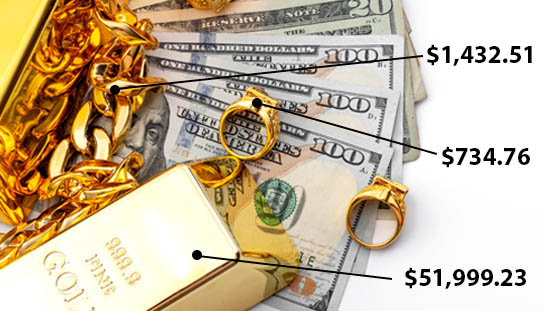Comprehending the Monetary Implications of Costs and Expenditures in Gold Purchasing and Pawning Deals
Comprehending the Monetary Implications of Costs and Expenditures in Gold Purchasing and Pawning Deals
Blog Article
Gold has been a prized asset for ages, serving as a method of currency, financial asset, and ornamentation. When acquiring or pledging gold, it is essential to comprehend the monetary implications of different fees and charges that can affect the overall expense and worth of the transaction. These fees can substantially affect how much money one gets when pawning gold or how much is paid when purchasing it. Being aware of these charges can aid buyers make knowledgeable decisions and prevent unexpected costs.
When buying gold, buyers should look out for several types of charges. One frequent fee is the markup, which is the discrepancy between the wholesale price and the consumer price. Retailers often add a markup to cover business costs and earning margins. Additionally, there may be transaction tax imposed during the transaction, depending on local regulations. Consumers should also consider other possible fees, such as delivery fees if the gold is being shipped. Understanding these costs in advance can prevent unexpected fees and help purchasers plan accordingly.
Pawning gold also comes with its own range of fees and charges. Pawn websites shops typically impose interest on loans secured by gold goods. The loan rate can vary significantly among various pawn shops, so it is essential to contrast rates to find the most favorable deal. There may also be storage fees if the pledged gold is kept for an extended period. Furthermore, pawn shops may levy fees for appraisals or administration the loan, which can increase to the overall cost. Knowing these fees can help people make better monetary decisions when pawning their gold.
Another important factor to consider is the weight and quality of discover here the gold being bought or pawned. The worth of gold is determined by its present market price, which varies based on economic conditions, demand, and supply. Additionally, gold pieces are often evaluated in karats, which indicates the purity of the metal. Greater purity gold typically fetches a higher price. Understanding how these elements influence the financial outcome of gold deals is crucial for consumers, as they can influence the fees charged and the ultimate amount obtained or spent.
In summary, being knowledgeable about the fees and costs associated with purchasing and pawing gold can lead to better monetary decisions. Whether buying gold for financial growth or pawning items for rapid cash, individuals should take the time to investigate and comprehend the various costs associated. This knowledge can help consumers navigate the challenges of gold transactions and ensure they maximize their monetary returns while reducing unnecessary outlays.